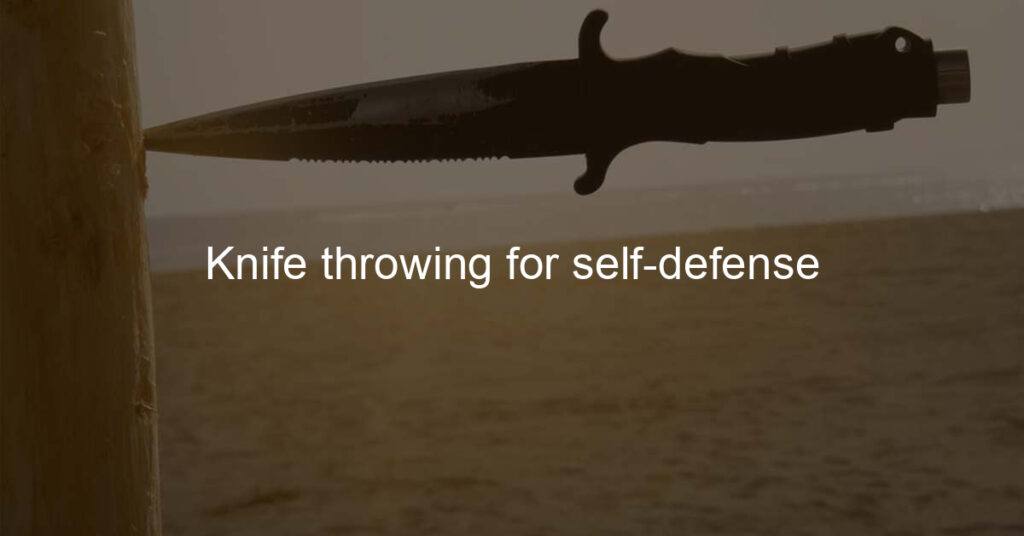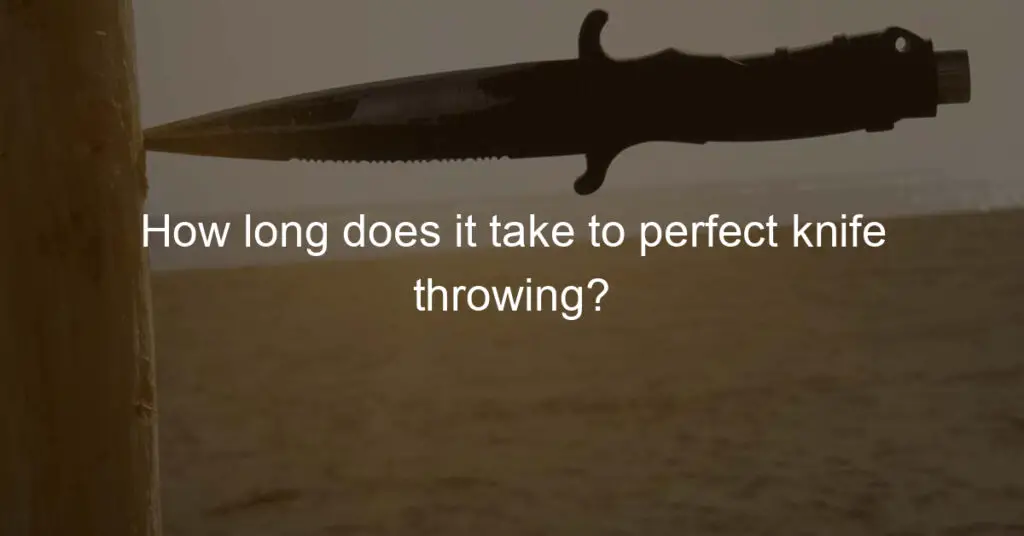Self-defense is an important skill to have, and knife throwing is a great way to defend yourself. With proper training, you can be accurate and effective with your throwing. Knife throwing can also be a fun hobby to take up!
Is knife throwing an effective self-defense technique?
Knife throwing is a classic form of self-defense, but whether or not it is an effective technique depends on the situation. Throwing knives requires accuracy and precision – two things that aren’t always easy to achieve in a dangerous scenario – and so it can be difficult for the average person to rely on it in a real-life attack.
Additionally, if you don’t know how to properly handle and throw knives, the attempts could end up doing more harm than good. That being said, when used correctly, this unique form of self-defense could prove useful in certain situations since knives can inflict serious damage depending on their velocity and trajectory.
What are the risks of using a knife for self-defense?
While knives can be an effective way of defending yourself, they come with a lot of risks as well. For one thing, using a knife in self-defense requires a significant amount of precision. Even if you don’t have the intention to inflict serious harm on your attacker, you could end up injuring them seriously – and even fatally – if you’re not properly trained in how to use the weapon.
Furthermore, wielding a knife does not guarantee that you will disorient or disable your assailant; in fact, studies have shown that knives are only successful in self-defense around 10% of the time. Additionally, depending on the laws in your area, carrying a knife might make even a legitimate act of self-defense illegal. Overall, it is important not to underestimate the risks associated with using knives as a form of self-defense and carefully consider all of your options before making any decisions.
How do I choose the right knife for self-defense?
If you’re looking for the right knife for self-defense, you need to know exactly what to look for so you can be prepared. Your knife should be easily concealable, but still, be a good size with a sturdy handle. The blade should be made of a material that is strong and rust-proof; stainless steel is one of the best materials.
Look for a knife with a dull tip, as this will help minimize any accidental injuries while still offering maximum protection when needed. Consider the locking mechanisms, as this will ensure your blade is locked in place and won’t slip or fold back during use. Finally, make sure the knife feels comfortable and safe in your hand – you don’t want it to slip or become too uncomfortable as this could compromise its efficacy during an attack situation.
What are the legal implications of using a knife for self-defense?
Using a knife for self-defense is not something to take lightly. Current laws vary from state to state, but typically the limits for self-defense aim to not permit “immunity” from prosecution if it can be proven that you employed the knife against someone taking part in illegal actions or that you have used an excessive amount of force in defending yourself.
As with any situation involving severe physical injury, it’s important to consult a reliable attorney if you’re ever put in a situation where you must defend yourself with a blade. Ultimately, just remember that all legal systems are built on intention and either could land you in hot water if you’re not careful.
How do I train for knife throwing in a self-defense situation?
Knife throwing is an exciting and potentially effective form of self-defense, but it also requires careful training to ensure safety. Many may think that knife-throwing is easy because it looks cool in movies, but that’s far from true. It’s important to train regularly to better understand the mechanics and physics of how the knife flies when thrown.
Start with a practice dummy target, throw it at different angles, and experiment with spin techniques. When you advance your skills, move onto live targets like paper plates or other untethered shapes; with proper practice and caution, you can learn velocity control and accurate throws. Overall, take every precaution while training—practice safe throwing techniques, and understand your limitations as well as the blade’s capabilities before attempting any new moves or stunts.
What other self-defense techniques should I learn in addition to knife throwing?
One of the best and most effective ways to protect yourself is by being aware of your environment. Take a self-defense class or an active shooter course that teaches how to identify a violent situation and react quickly and appropriately. Additionally, learning simple but effective martial arts techniques can help you escape from dangerous situations.
Combining martial arts moves with knowledge about pressure points and reflexology can give you an edge in any confrontation. Learning basic self-defense tactics such as blocking punches or keeping your distance from assailants will also come in handy when you find yourself at risk of being attacked.
Conclusion
After reading this post, it’s evident that knife-throwing can be an effective tool for self-defense. It is important to remember that additional training and practice must be done to become proficient with this type of protection. While knives may be intimidating, with the proper instruction and safety measures taken, knife throwing can offer peace of mind in distressing situations. Be sure to do your research when purchasing a knife for throwing, look for ones made with durable materials and non-slip handles that are comfortable to hold long periods between throws.







